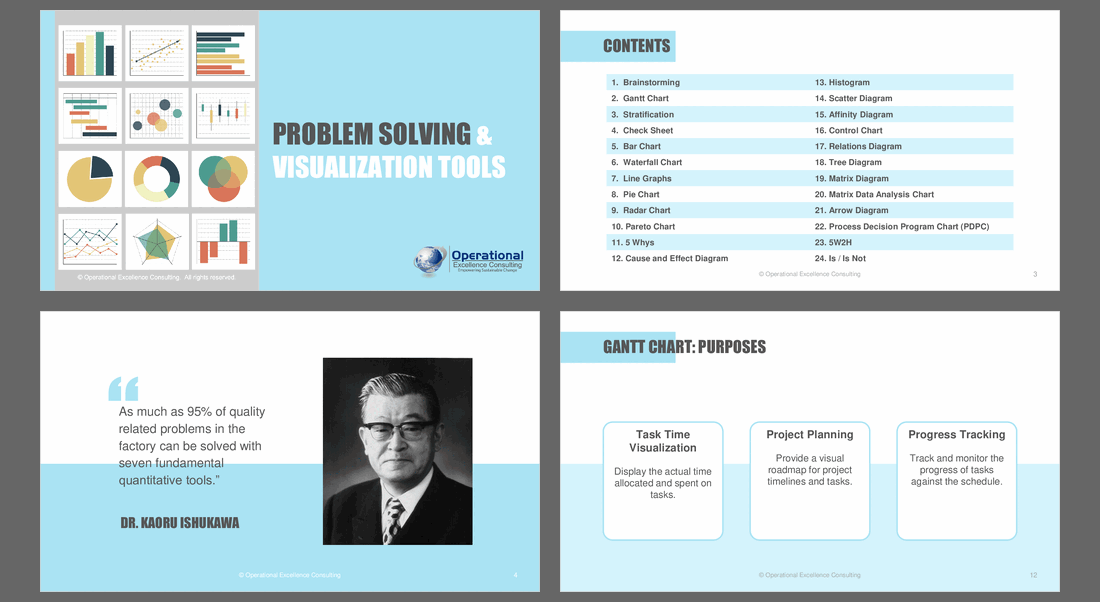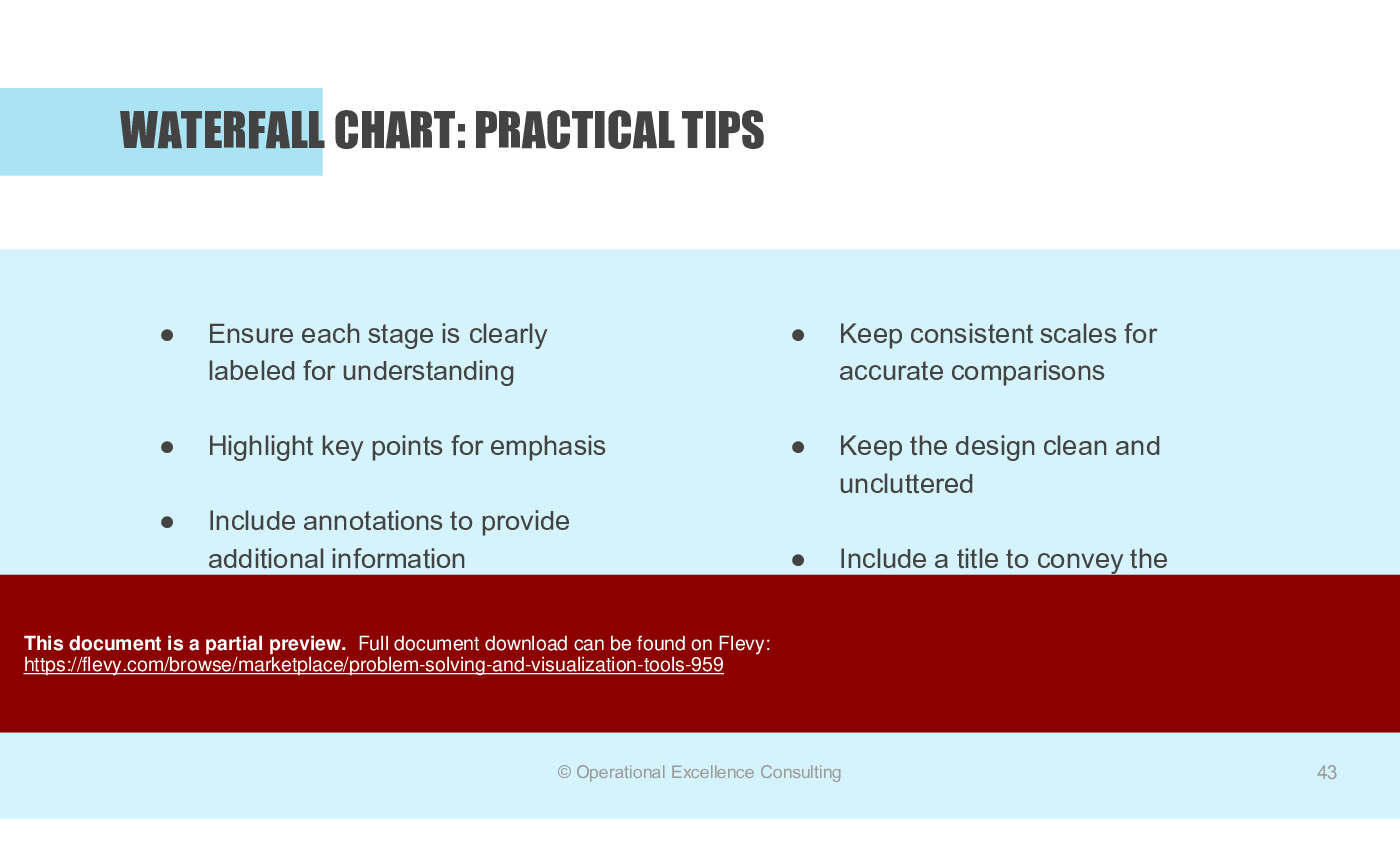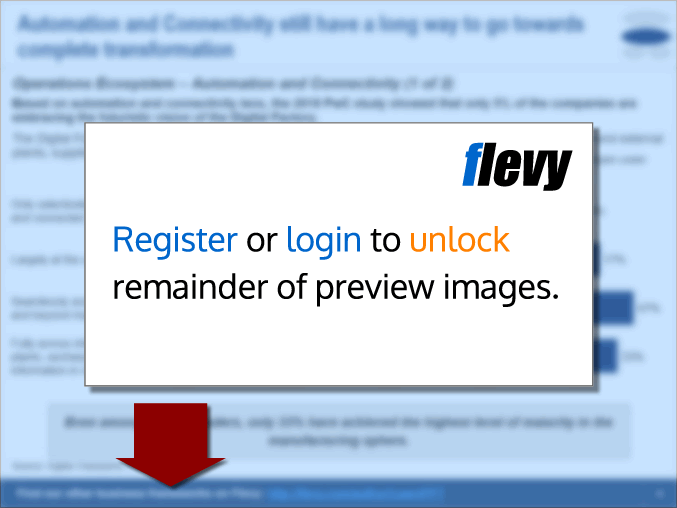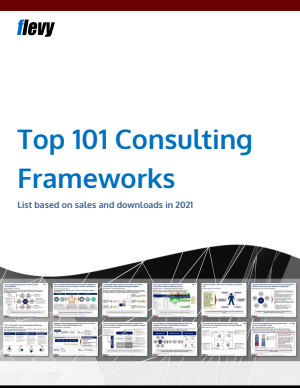Problem Solving & Visualization Tools (PowerPoint PPTX Slide Deck)
PowerPoint (PPTX) 202 Slides
BENEFITS OF THIS POWERPOINT DOCUMENT
- Enhance decision-making and problem-solving with a versatile toolkit of 24 visualization tools.
- Improve communication and analysis with a comprehensive set of data presentation methods.
- Increase efficiency and effectiveness in various industries using these essential tools for data interpretation.
PROBLEM SOLVING PPT DESCRIPTION
Unlock the potential of your problem-solving endeavors with our comprehensive "Problem Solving & Visualization Tools" presentation. This collection of 24 tools, ranging from foundational to advanced Quality Control (QC) instruments, caters to diverse industries and is designed to elevate your problem-solving skills and enhance communication.
KEY FEATURES
1. Diverse Applicability: Applicable across all industries, these tools are versatile and adaptable to your unique problem-solving challenges.
2. Structured Format: The presentation employs a clear and concise format, providing structured information in 'Purpose,' 'When To Use,' 'Examples,' 'Procedures,' and 'Practical Tips' sections for each tool.
3. Complementary to Project Frameworks: Seamlessly integrate these tools into popular problem-solving frameworks such as PDCA, DMAIC, 8D, and more, adding depth and breadth to your projects.
CONTENTS
Explore a rich array of tools, each carefully curated to empower your problem-solving journey:
1. Brainstorming: Foster creativity and idea generation.
2. Gantt Chart: Efficiently plan and visualize project timelines.
3. Stratification: Analyze and categorize data for deeper insights.
4. Check Sheet: Systematically collect and organize data.
5. Bar Chart: Compare and visualize quantities effectively.
6. Waterfall Chart: Illustrate cumulative impacts and budget breakdowns.
7. Line Graphs: Identify trends and patterns over time.
8. Pie Chart: Represent proportions and percentages visually.
9. Radar Chart: Analyze multivariate data and performance.
10. Pareto Chart: Prioritize issues based on their significance.
11. 5 Whys: Uncover root causes through iterative questioning.
12. Cause and Effect Diagram: Visualize relationships between factors.
13. Histogram: Understand data distribution and variation.
14. Scatter Diagram: Explore relationships between variables.
15. Affinity Diagram: Organize ideas and identify patterns.
16. Control Chart: Monitor and control process variations.
17. Relations Diagram: Visualize relationships between various factors.
18. Tree Diagram: Illustrate hierarchical structures and relationships.
19. Matrix Diagram: Analyze relationships across two dimensions.
20. Matrix Data Analysis Chart: Dive deep into relationships within multidimensional data.
21. Arrow Diagram: Plan and visualize task dependencies in projects.
22. Process Decision Program Chart (PDPC): Anticipate and mitigate potential problems.
23. 5W2H: Systematically gather information with Who, What, When, Where, Why, and How.
24. Is / Is Not Analysis: Define and clarify the scope of a problem.
Equip yourself with a comprehensive toolkit that transcends industries and project frameworks. Enhance your problem-solving prowess, foster innovation, and elevate communication with these powerful tools. Embrace a structured approach to problem-solving, turning challenges into opportunities for growth and improvement.
The presentation includes practical tips for each tool, ensuring you can implement them effectively in your projects. Real-world examples and step-by-step procedures make this a must-have resource for any executive looking to drive results.
Got a question about the product? Email us at support@flevy.com or ask the author directly by using the "Ask the Author a Question" form. If you cannot view the preview above this document description, go here to view the large preview instead.
Source: Best Practices in Problem Solving PowerPoint Slides: Problem Solving & Visualization Tools PowerPoint (PPTX) Presentation Slide Deck, Operational Excellence Consulting









